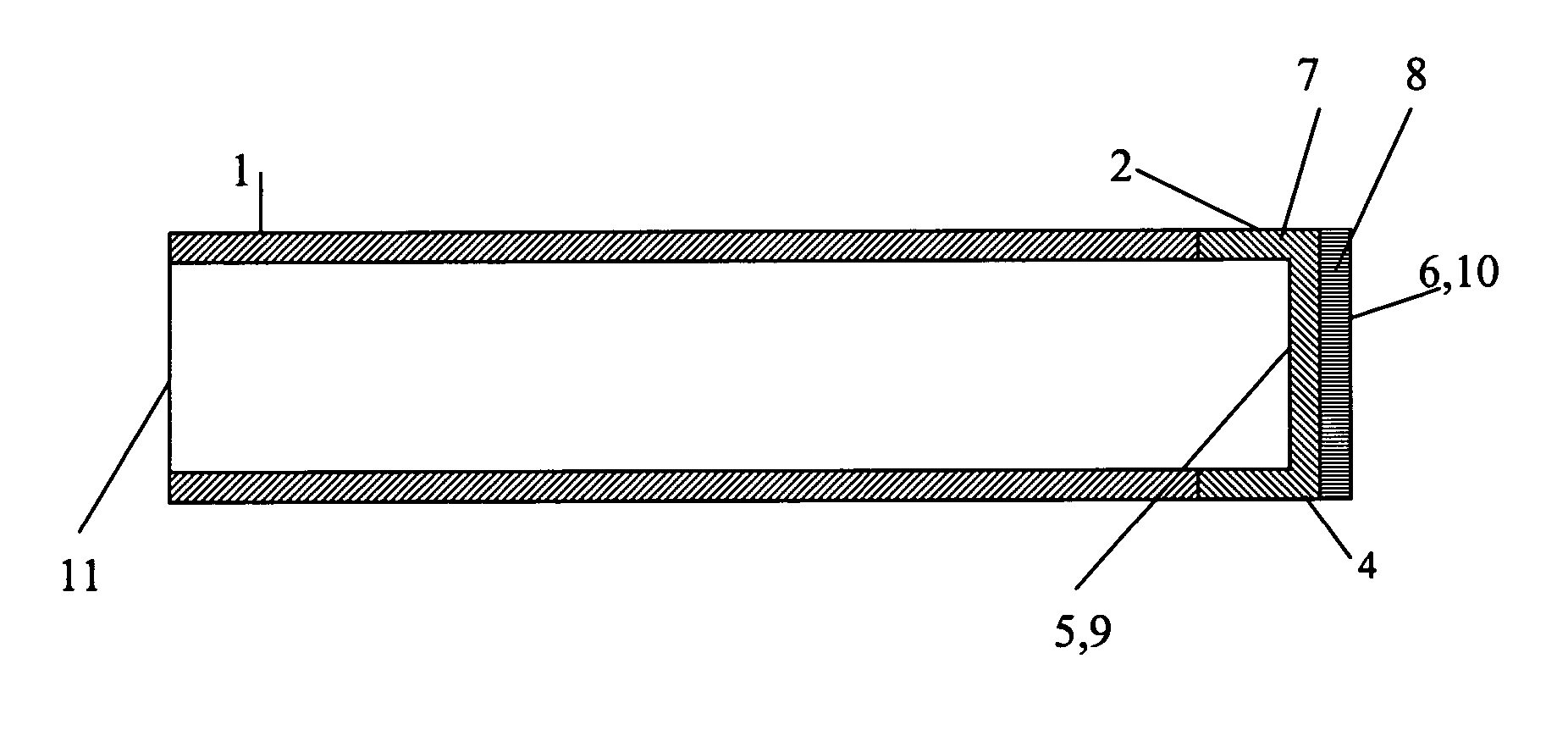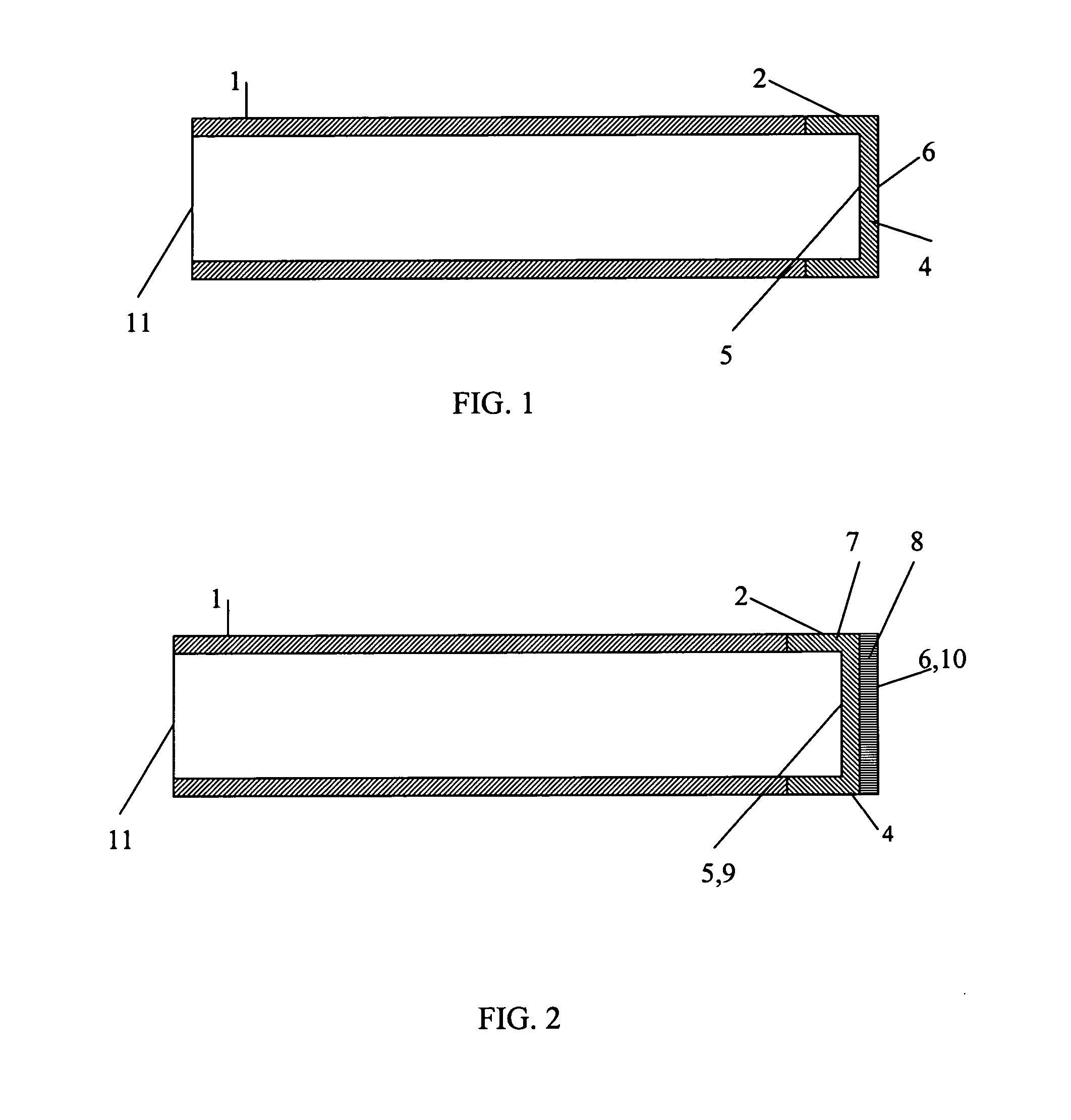Protector for a fibre-optic catheter
a protection device and fibre-optic catheter technology, applied in the field of physical engineering, can solve the problems of high cost, high cost, and economic impracticality of disposable optical probes, and achieve the effects of improving the safety and efficiency of use, cleaning and disinfecting and/or sterilizing, and improving the safety of us
- Summary
- Abstract
- Description
- Claims
- Application Information
AI Technical Summary
Benefits of technology
Problems solved by technology
Method used
Image
Examples
Embodiment Construction
[0048] The protector shown in FIG. 1 operates as follows.
[0049] An optical fiber probe (not shown in the drawing) is placed inside a sheath 1, which is designed to allow for the optical fiber probe to be placed inside of it. A closed distal end 2 of the sheath 1 is made as a window 4, which is at least partially, optically transparent. An end face of a distal part of the optical fiber probe is brought into contact with an inner surface 5 of the window 4. The inner surface 5 of the window 4 is designed capable of forming a temporary adhesive contact with the end face of the distal part of the optical fiber probe under a pressure of an axial force exerted on the optical fiber probe placed inside the sheath 1. An outer surface 6 of the protector window 4 is designed capable of forming a temporary adhesive contact with an object being studied (not shown in the drawing) under the pressure of the axial force exerted on the optical fiber probe placed inside the sheath 1.
[0050] The window...
PUM
 Login to View More
Login to View More Abstract
Description
Claims
Application Information
 Login to View More
Login to View More - R&D
- Intellectual Property
- Life Sciences
- Materials
- Tech Scout
- Unparalleled Data Quality
- Higher Quality Content
- 60% Fewer Hallucinations
Browse by: Latest US Patents, China's latest patents, Technical Efficacy Thesaurus, Application Domain, Technology Topic, Popular Technical Reports.
© 2025 PatSnap. All rights reserved.Legal|Privacy policy|Modern Slavery Act Transparency Statement|Sitemap|About US| Contact US: help@patsnap.com


